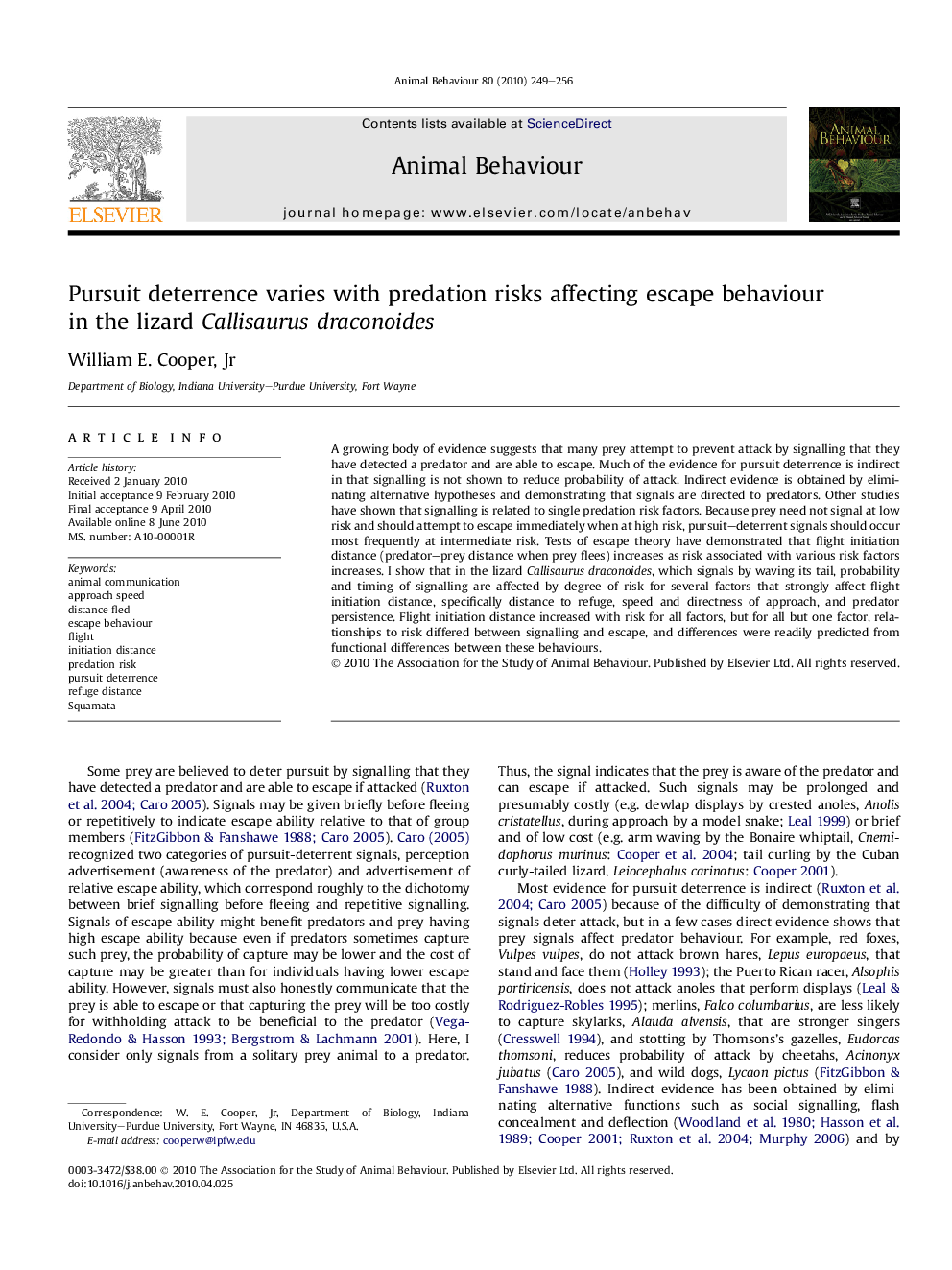| Article ID | Journal | Published Year | Pages | File Type |
|---|---|---|---|---|
| 2417143 | Animal Behaviour | 2010 | 8 Pages |
A growing body of evidence suggests that many prey attempt to prevent attack by signalling that they have detected a predator and are able to escape. Much of the evidence for pursuit deterrence is indirect in that signalling is not shown to reduce probability of attack. Indirect evidence is obtained by eliminating alternative hypotheses and demonstrating that signals are directed to predators. Other studies have shown that signalling is related to single predation risk factors. Because prey need not signal at low risk and should attempt to escape immediately when at high risk, pursuit–deterrent signals should occur most frequently at intermediate risk. Tests of escape theory have demonstrated that flight initiation distance (predator–prey distance when prey flees) increases as risk associated with various risk factors increases. I show that in the lizard Callisaurus draconoides, which signals by waving its tail, probability and timing of signalling are affected by degree of risk for several factors that strongly affect flight initiation distance, specifically distance to refuge, speed and directness of approach, and predator persistence. Flight initiation distance increased with risk for all factors, but for all but one factor, relationships to risk differed between signalling and escape, and differences were readily predicted from functional differences between these behaviours.
